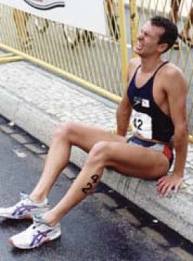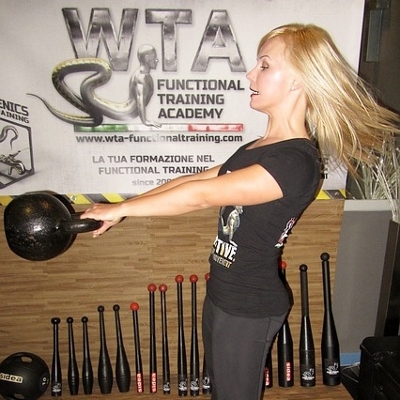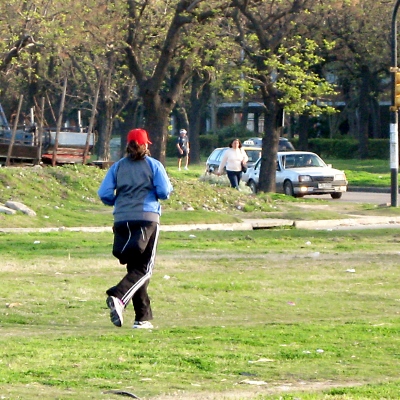 A muscle cramp is an involuntary contraction of a muscle. Cramps can last anywhere from a few seconds to a few hours. (Luckily I’ve never experienced the latter). Nobody likes a muscle cramp. Sometimes, my feet cramp when I’m running barefoot. I once got one high up in my leg while swimming, which was a bit scary, because I had to tread water with just a leg and two arms until it went away; however, by far my least favorite muscle cramp is the dreaded “Charley horse,” a cramp in the calf that I get most commonly after sprinting.
A muscle cramp is an involuntary contraction of a muscle. Cramps can last anywhere from a few seconds to a few hours. (Luckily I’ve never experienced the latter). Nobody likes a muscle cramp. Sometimes, my feet cramp when I’m running barefoot. I once got one high up in my leg while swimming, which was a bit scary, because I had to tread water with just a leg and two arms until it went away; however, by far my least favorite muscle cramp is the dreaded “Charley horse,” a cramp in the calf that I get most commonly after sprinting.
One of the most common causes of muscle cramps is simply dehydration. Thus, even though you’ve heard it many times before, I’ll say it again: drinking water before, after, and especially during exercise is essential to a good workout. There’s a warning, of course. Drinking endless amounts of water will deplete the rest of your system (e.g. your electrolyte balance), so that’s where sports drinks come into play.
Low blood levels of calcium, magnesium, or potassium are possible causes of cramps that could probably be prevented with dietary change. Magnesium is needed to absorb calcium, which is involved in excitability of nerve endings that stimulate muscles. Green vegetables, legumes, nuts, seeds, and un-refined grains are typically good sources of magnesium. Potassium can be found in many sources, but a banana is an easy choice for an athlete on the go. Calcium is easy to find in dairy products, and it is often found in fortified products, but can also be found in a few vegetables such as kale and broccoli.
But let’s suppose you weren’t able to prevent the cramp, then what do you do? I’ve found that massaging the muscle in the opposite direction of the cramp is the quickest way to get it the muscle to relax. If a warm heating pad is available that may have the same effect. When it feels like the cramp might be gone, I carefully test my range of motion and stretch the muscle, backing off if I sense the onset of the cramp again. Sometimes the area can remain sore for several days after the event. If you experience a cramp during a workout in warm weather, be aware that it could be one of the early signs of heat stroke and take care of yourself accordingly. If it’s likely that the cramp is associated with fluid loss (AKA sweating), fluid and electrolyte replacement is critical.





